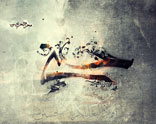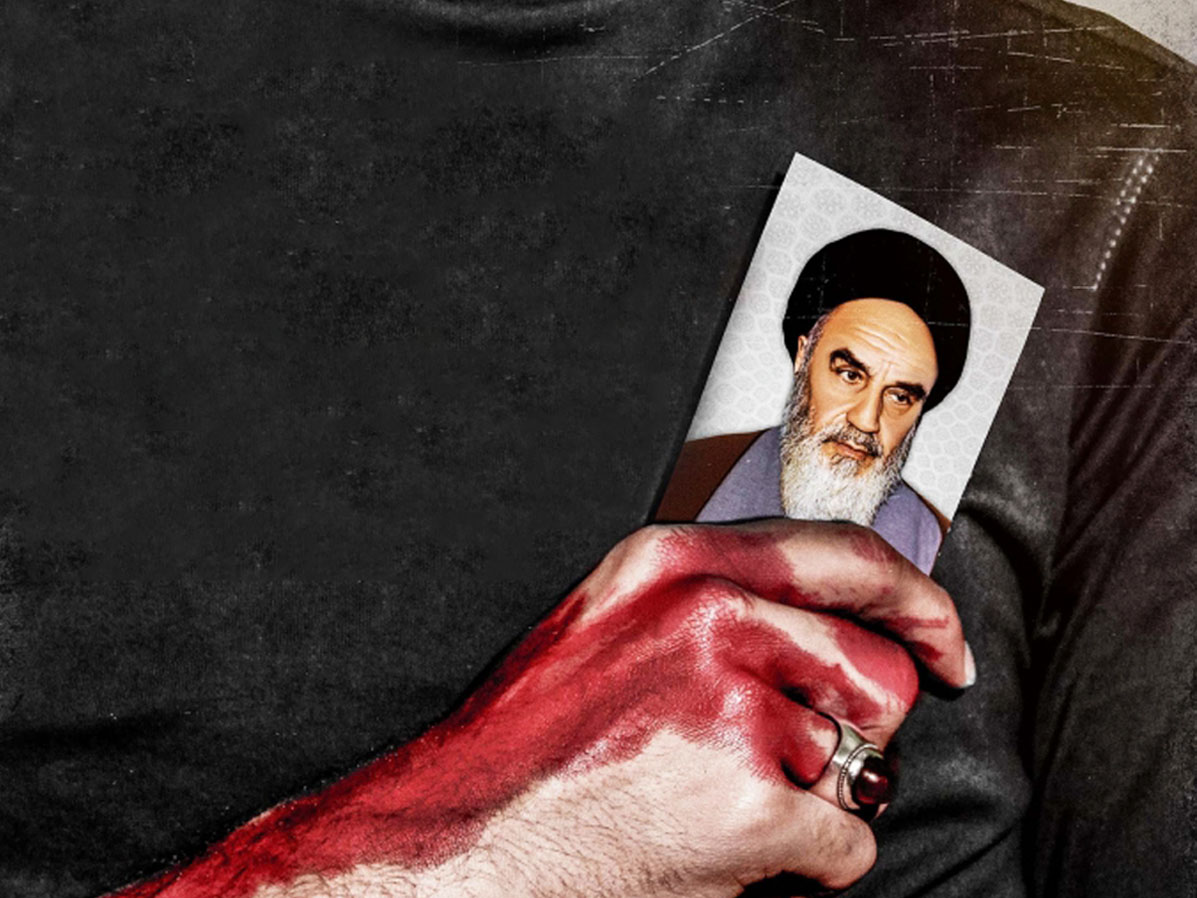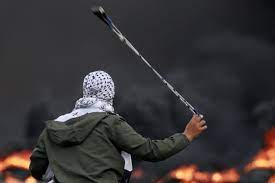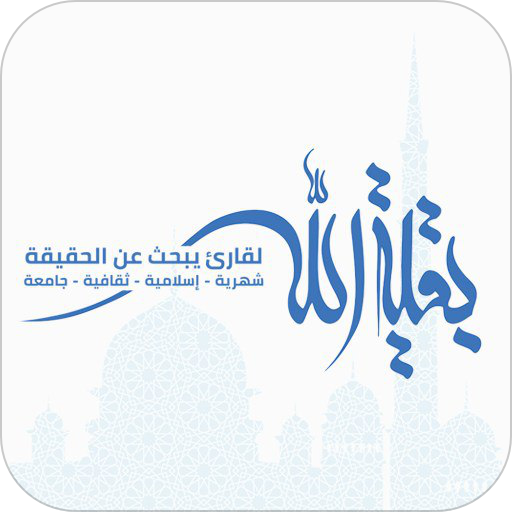Martyrdom
It is difficult for me to speak today about martyrdom as today marks the Shiites anniversary of the martyrdom of Imam Hussein (A.S.).
There has been much written and said and much continues to be written and said about Imam Hussein (A.S.) and the role he played in history. The ancients have explained him one way and the innovating intellectuals in another. But as I realized recently, we cannot know what Imam Hussein (A.S.) has done without understanding what the meaning of martyrdom really is.
The greatness of Hussein (A.S.), on the one hand, and the individualistic views of him have caused that which is greater than Hussein (A.S.) himself to be concealed by the radiance of his charisma. That which is greater than Hussein (A.S.) is that which Hussein (A.S.) was sacrificed for. We have always spoken about Hussein (A.S.) but we have rarely spoken about the purpose for which Hussein (A.S.) so generously sacrificed himself.
Today I intended to speak about the concept of the sacrifice which Hussein (A.S.) and those like him have made and the greatness of such self-sacrifices in the history of mankind and our religion.
And so, in the presence of the people, the created and of the Creator, I would like to cite that idea and say something of its meaning as it has been demonstrated by the sum total of their lives and deaths, that idea called 'martyrdom'.
It is a difficult task. To begin with, my knowledge and my intellectual capability do not permit me to perform such a difficult assignment. The contradictory pattern which this issue follows (at least with respect to myself) makes my position even- more difficult.
On the one hand, I must present martyrdom from an intellectual, scientific and philosophical point of view. I can only use my head. Only science and logic can assist me.
On the other hand, the story of martyrdom and that which martyrdom challenges is so sensitive, so belovedly exciting that it pulls the spirit towards the fire. It paralyzes logic. It weakens speech. It even makes thinking difficult. Martyrdom is a mixture of a refined love and a deep, complex wisdom. One"cannot express these two at the same time and so, as a result, one cannot do them justice.
In particular, for a person such as myself, who is emotionally and spiritually weak, it is even more difficult. But I will try my best and I hope to succeed in communicating some of the things which it is my intention to express.
In order to understand the meaning of martyrdom, the ideological school from which it takes its meaning, its expression and its value should be clarified.
In European and Western languages1, a martyr is one who chooses 'death' in the defense of his beliefs against his enemy where the only way for him is to die. But the words, martyrdom: arise and bear witness, which exist in Islamic culture to express or name the one who has chosen 'death' has quite a different meaning from that of the western word, martyrdom. This shows one of the differences between Islamic and non-Islamic rites.
In European countries, the word = martyr stems from 'mortal' which means 'death' or 'to die'. One of the basic principles in Islam and in particular in Shiite culture, however, is 'sacrifice and bear witness'. So instead of martyrdom, i.e. death, it essentially means 'life', 'evidence', 'testify', 'certify'. These words: martyrdom and bearing witness show the differences which exist between the vision of Shi'ite Islamic culture and the other cultures of the world.
Its School of Thought
[Therefore] in order to understand the concept of martyrdom, we should study it within the context of the school of thought and action which it is based upon, and in the school of thought of which Hussein (A.S.) is the manifestation par excellence. In the flow and struggle of history in the story of mankind, Hussein (A.S.) is the standard bearer of this struggle and his Karbala, a battlefield among battlefields, is the only link uniting the various fronts, the various generations and the various ages, throughout history from the beginning until the present moment and flowing on into the future.
Hussein (A.S.)'s meaning becomes clear when we understand his relationship to that flow of movements which we have discussed in earlier lectures which historically begins with Abraham. This meaning should be made clear and Hussein (A.S.)'s revolution must be interpreted. To view Hussein (A.S.) and the battle of Karbala as isolated from historical and social circumstances would force us, as indeed it has for many of us, to view the man and the event purely as an unfortunate, if not tragic occurrence in the past and something for us to merely cry about (and we certainly do continue to cry) rather than as an eternal and transcendent phenomenon. To separate Karbala and Hussein (A.S.) from their historical and ideological context is to dissect a living body, to remove only a part of it and to examine it in exclusion of the living system of the body.
Two Classes of Prophets
As I have mentioned in my previous lectures, throughout the whole history of humanity, religious movements, whether related to the contents of the religions, and conduct of the prophets and founders of the religion or to the social class connections of the leaders of the religion and to what they were calling the people to, are divided into two classes. According to this classification, all of the historical prophets, whether true or false, as well as anyone who has begun a religious movement, are divided into two different classes:
The first group: belongs to the religious chain founded by Abraham. This chain of prophets, from the historical point of view, are nearer to us and therefore we know them better. They consist of prophets whose view of society arose from the most deprived social and economic class of a society. As Mohammad (peace be upon him and his household) said, all of these prophets were either shepherds, as history shows us, they grazed sheep, or a few were simple hungry artisans or workers.
These prophets stand in contrast with the messengers of the other group or founders of intellectual and moral schools of thoughts such as those in China, India, Iran and the founders of the scientific and ethical schools of Athens. This latter group, without a single exception, were aristocrats. They arose from the noble, powerful, comfortable classes of their society.
Throughout history, the powerful rulers of society have been one of three groups: the powerful, the wealthy and the clergy. They exercised political and economic power with each other and control over the faith of the people. They cooperated with each other in ruling the people. Their collaboration, whether or not they shared the same views, was in order to rule the people and for the sake of the people.
All of the non Abrahamic messengers from IndoChina to Athens were either connected on their mother's side or their father's side or even both sides to emperors, clergymen and aristocrats. This holds true for Confucius, Laotzu, Buddha, Zoroaster, Mani, Mazdak, Socrates, Plato and Aristotle. Whereas the Quran emphasizes, ﴾We appointed among the ordinary people, a Prophet from themselves﴿2. They were ordinary people from the masses and among the community. Thus the Abrahamic prophets arose from the mass of the people.
This does not mean that they did not have an angelic dimension or that they did not hold absolute powers and were only human beings. It means they were appointed from among the ordinary mass of people rather than relating to a special, noble, and selective class of society.
Some people believe that because the Prophet of Islam arose from among the Arabs, he should speak Arabic, or Moses, who was appointed to the Jewish people, should speak Hebrew. It is obvious that a Prophet appointed from amongst the Arabs cannot speak a language other than Arabic.
The important thing is to speak in the language of ordinary people which means to speak the tongue and use the idioms which the mass of that community understands. In order to speak about their needs or troubles in a language which is understandable to them, and not as philosophers, poets, intellectuals, scholars and educated people, they must use a language and idioms which people are familiar with. But, neither do they understand the thoughts and emotions of the ordinary people nor do they understand their language. This still can be noted everywhere. When we discuss the Abrahamic prophets, we are talking about the people, for the mission of these prophets differs from that of the other.
The mission of the non-Abrahamic messengers is always related to the existing power structure so that power supports these messengers' ideas. The Abrahamic prophets, on the other hand, were always supported by the ordinary people against the powerful rulers of their time.
Look at Abraham. As soon as God appointed him, he wielded his mace to destroy the idols. Moses took up his shepherd's staff and stormed Pharaoh's palace. He brought down the wealthy and powerful Croesus, buried him in the earth and drowned Pharaoh in the sea. And the Prophet of Islam first went through a stage of individual development, then began his spiritual struggle. Within a period of 10 years, he fought 65 battles, that is, every 50 days, a battle, a military encounter. The miracles of the Abrahamic prophets are also in accordance with their mission. The turning of the staff into a serpent was used to destroy wizardry and to attack the Pharaoh's throne.
The Quran clearly announces the principle that Islam is not a new religion because, in fact, throughout history, there has only been one religion. Every prophet was appointed to establish this religion in accordance with the circumstances of the time and in compliance with the needs of that era.
There is only one religion and its name is Sub-mission "islam". Through this announcement, the Prophet universalizes it and gives the idea of Submission a universal, historical viewpoint. He relates the Islamic movement to other movements which have, throughout history been fought to free people. They have stood up, risen against the powerful, the wealthy and the deceivers. In this way, they have shown their unity of vision: one spiritual struggle, one religion, one spirit and one slogan throughout the whole of humanity's history in all domains, all times and all generations.
Let us take a look at this verse of the Quran and consider its historical context and choice of words and see how the historical perspective is expressed in the Quran and see how it places these movements one after the other.
﴾Those who disbelieve in the signs of God and slay the Prophets without right and slay such men as bid to justice. . .﴿3
We see that in this verse three points are connected to each other. First, the signs of God, second, Prophets and third, men who call for equality in opposing the disbelievers. The Prophets and men of justice are put on one level. We see how a type of social encounter and philosophy of human history and description of previous movements is expressed in the Quran.
The Prophet of Islam is the last messenger of this religion of Submission, which throughout history, as the Quran has repeatedly shown, the Prophets came to bring. Their message consisted of wisdom, the Book and justice for the world. The Prophet of Islam is the last messenger of this world and human movement who, in the name of Submission (islam) called the people to serve God and the One so that they would be freed from obeying and serving any other than Him.
The Prophet of Islam came to confirm the universal view of Unity (tawhid) and even to bring that unity into human history, to all races, nations, groups, families and social classes and to eliminate the discord brought by polytheistic religions. The slogan of Islamic unity was a slogan which gave freedom. Before intellectuals, scholars, the educated and philosophers became aware of it, slaves, the tortured, hungry and the belittled were sensitive to and aware of it. It is because of this that the group which gathered around Mohammad in Mecca were among the most deprived, who had been belittled and were among the most debased elements of society. The Prophet of Islam was scorned by his enemies because only the dregs of humanity surrounded him. This Is the greatest praise today for this movement while we see that the leaders of the Buddhist religion are all of the nobles and aristocrats of China and India. Today, values have changed!
This is why the Prophet of Islam marked the turning point for slaves who, throughout history, were certain that their fate was slavery. Slaves and the debased were convinced by the tongue of religion, science, philosophy or with the tongue of the day or with poetry or art that their fate was to serve their masters and they believed that they existed solely to experience suffering, to carry heavy loads and to go hungry, so that others might receive pleasure. They were born and created for this.
This deprived class, who were convinced that the gods or God were their enemy, believed that in order for the world to function and for the performance of the jobs of the people, they were created as porters in order to carry the loads. Or as the Prophet Mani had said when speaking of light and darkness, "The wretched and defeated are of the essence of darkness and the conquerors are of the essence of light." Aristotle and Plato, intellectual geniuses that they were, had said "God or nature has created some as slaves of creation and others as free so that the slaves perform the ordinary jobs and the free ones can then be free to attend to the higher affairs such as morals, poetry, music and civilization."
The Prophet of Islam had been appointed in order to complete the movement which had existed throughout history against deception, falsehood, polytheism, creation of discord, hypocrisy, aristocracy and class differences which were all made an object of the spiritual struggle and by announcing that all of humanity is of one race, one source, one nature and one God, to declare equality for all, with philosophical explanation and by fighting an economically powerful regime to maintain social equity.
Take the model society of Medina as an example where Balal, a debased slave was recognized as more noble and of greater value and was treated with more respect than the aristocrats of Arab society. Everyone accepted his position. Suddenly the inhabitants of Medina, the Arabs, Jews, the Qoraish find themselves greeting the young slave of Hozaifah as an equal, he who had once gone about in the narrow streets as a debased and deprived slave, now, in the Ghoba Mosque standing for prayer in front of the noble Emigrants of the Qoraish, is one of the dearest, most radiant figures. The most distinguished personages of the pre-Islamic era and even of the present ones are praying behind him.
All values were shattered when the Prophet himself began his efforts to destroy all of the values of ignorance and aristocratic thinking. He instructed them to shorten the long, flowing robes they wore and to trim their long beards which were signs of aristocracy. He ordered people not to strut with pride in the streets. He instructed people to ride two at a time on horseback. One would ride in front and another behind. Sometimes, in order to break down the values of the aristocracy in the eyes of the people, he would ride a donkey bareback.
One day an old woman, who had for many years heard of the greatness and magnificence of the Prophet, came before him. She stood tongue tied in awe of his presence. The Prophet, softly, kindly and simply took her by the shoulder and said, "Why are you afraid? I am the son of that Qoraish woman who milked sheep. Who are you afraid of?"
When this shepherd, who was the last appointed Prophet, the last messenger for those who suddenly arose out of silent deserts and assaulted the lords of power, wealth and deceit in the cities, died, suddenly everything was different. Discrepancies appeared immediately upon his death. The path of historical events did not deviate from the true way more than a centimeter at first. The angle which appeared between the School of Islam and the History of Islam, between the truth and reality was narrow at the beginning. But after the Prophet died, the gap between them grew wider and wider. It was like the angle between two lines which are at first close together (no more than a thousandth of a centimeter apart) but gradually the distance expands as history moves forward. The two lines widen so that in an eternity there are kilometers of space between them. If other factors and causes become operative as they do, we may see that the two lines which extend from an angle move apart as the line of history from the line of the truth of Islam has done in this case.
Deviations Appear
Thus after the death of the Prophet, the deviation, so very slight at first, developed and generation after generation, the distance between honesty, rectitude, truth and justice progressed so that after 14 or 15 years when we reach Othman he, like a magnetic pole, attracted all of the counter-revolutionary agents who were scattered here and there. He gathered them at the center of Islamic power and the Islamic movement. Othman served as a link between the mentality of the age of ignorance and the Islamic revolutionary period. His link was the Caliphate which served as a bridge for the most despicable elements of the rejected aristocracy who still lingered on. They usurped the positions which had been gained through the spiritual struggle of the Emigrants and the helpers.
Othman bridged the gap and across his bridge of the Ottoman Caliphate passed the dirtiest, half-dead, rejected agents of aristocracy. They took positions which had been gained through the jihad [religious and spiritual struggle] of the Emigrants and of the Companions of the Prophet.
Othman acted as the instrument of the Ummayyids, the basest enemies of Islam, and, through him, they not only made up for the blows they had received at the time of the Prophet, but they appropriated the successes of the Revolution as well.
This kind of setback has repeated itself over and over, again throughout the course of Islamic history to the point of becoming a rule - I do not mean to say a necessary rule- that a revolution necessarily devours its children. But Othman allowed the faithful children of the Revolution to be devoured. Those who wielded their: swords and pursued their jihad with faith, self-sacrifice, devotion and endurance were destroyed by the oppressors and usurpers of power, government, the rights of the people and the heritage of the Revolution. The founder of the movement and the first sacrifice of Othman and the Umayyads who dominated him was Ali (A.S.), a victim of the revival of the Age of Ignorance by the surviving counter revolutionaries. The political, social and international make-up of Ali was the representative par excellence of a new struggle, a struggle between the leaders and the loyalists of the new set of values, of the new faith, who rose up with new and true slogans of Islam and found themselves confronting the greed and worst elements of the revival of the rule of ignorance which was imposed with a new fervor. These usurpers, with new vigor, both openly and undercover, launched their struggle against the noblest figures of the Islamic Revolution.
The Prophet is the manifestation of the struggle of an age in which, on the one hand, true, believing Muslims confronted foreign enemies who were known to be anti Moslem, while Ali is the manifestation of an age in which an internecine struggle took place between the loyal, faithful and anti-movement elements who had donned the masks of faith.
The struggle between the Prophet and Abu Sufiyan [who as an opportunist only accepted Islam when his party was finally defeated] was an external struggle, a battle purely and simply between friend and foe. Whereas in contrast, the struggle between Ali and Muawiyah, the son of Abu Sufiyan was an internal affair between friend and pseudo-friend or should we say, 'an internal enemy', theoretically supporting the movement. The battle on the foreign field, the struggle with the external foe, resulted in victory whereas the internecine struggle with the internal foe ended in defeat. This is what is described in Islamic terminology, in the language of the Quran, as 'hypocrites' (munafiqin) - those who are more base and more dangerous than an out and out atheist (kafir) or even a polytheist (mushrik). The Prophet is thus the manifestation of Islamic victory on the foreign front,- over outright atheism and polytheism, whereas Ali is the manifestation of Islamic defeat within the ranks, at the hands of hypocrisy.
Confronting the 'neo-ignorance' and 'neo-aristocracy', which comes to life within the context of Islam under the cover of Truth and the very heart of the justice seeking Revolution of Islam, Ali is the base of resistance. For many years, Ali struggles and strives against polytheism within his ranks, a polytheism which has cloaked itself in the dress of Unity (tawhid). He has to grapple with the atheist who has assumed the mantle of Islam and who has positioned the Quran on the point of the lance [at the battle of Siffin]. In the end, Ali is killed by pious but unconscious people who always become tools at the hands of a sharp enemy.
As we move forward in time, the true base of the Islamic Revolution becomes increasingly weakened, while in contrast, the base of neo-ignorance and the internal enemies grows ever stronger until we reach the age of Imam Hasan (A.S.) (660 A.D., 40 A.H., the eldest son of Ali (A.S.) and Fatima (A.S.)).
Imam Hasan is the inheritor of Ali's administration and becomes commander of an army in which hypocrisy has developed affecting even his closest friends. His best commanding officers are secretly tied in with the plotting of the Umayyads in negotiating with the tender of money, power, and promises. Those officers are bargaining their souls with Muawiyah and his court, purchasers of humanity and honor, in Damascus. From the administrative point of view, Hasan has no authority over one of the most powerful, dangerous and sensitive sections of the Islamic domain (the province of Syria) which has entirely fallen into the hands of the enemy. In Iraq, the various factions are in dissension. The aristocrats can not remain loyal to the Alawite regime. The masses are neglected and indifferent.
The Khajirites, who are from amongst the most fanatic zealots and a dangerous power in the populace, confronted Imam Hasan who is the manifestation of the last struggle of the dearest, most aware and most progressive companions of the new Islamic movement. The ranks of the hypocrisy of the internal enemy grew stronger day by day until the agonizing and catastrophic moment of the last struggle to defend the Islam of justice against the Islam of aristocracy. The only alternative is to make peace. He has been defeated. A defeated party does not specify the terms of a peace treaty. They are imposed upon him. Hasan is broken.
Thus, Hasan, who is the leader and manifestation of the spirit of the struggle of the Revolution, sits in resistance to the reawakened neo-ignorance. He is disarmed and like an ordinary soldier when we see within the very household of the Imam and leader of the people, turncoats and Ummayyid spies, those who had broken bread with him, turn against him. They even buy off his wife and, through her, have Hasan poisoned. We can see to what extent justice, freedom and the people have weakened. It reaches the point that the power of Imam Hasan, the leader of a force which is still resisting today and defending the name of Islam, has so dwindled that when he dies, he can not be buried next to the Prophet (his grandfather) in Medina, the city of his grandfather, father and mother and the city of his family, the city of the Emigrants and Helpers of the Prophet of Islam. Imam Hasan is buried in the public cemetery of Baqi.
Imam Hasan, the manifestation of loneliness and isolation in Islamic society, even in the Medina of the Prophet, clearly shows how the Truth-seeking party in Islam is utterly shattered. The new force of revolution completely overwhelms every one and every thing and conquers in every domain. Now it is Hussein (A.S.)'s turn.
* Martyrdom: Arise and Bear Witness by: Dr. Ali Shariati, Translated and Published by: Ali Asghar Ghassemy, The Ministry of Islamic Guidance, Tehran, Islamic Republic of Iran. Reproduced with permission by the Ahlul Bayt Digital Islamic Library Project team.



















